
Polonnaruwa: The Ancient Marvel of Sri Lanka
Discover the ancient wonders of Polonnaruwa, a UNESCO World Heritage site in Sri Lanka, filled with majestic ruins, serene Buddha statues, and stunning landscapes.
Polonnaruwa is a city that takes you back in time to the ancient Kingdom of Sri Lanka. The city is a UNESCO World Heritage site, known for its well-preserved ruins dating back to the 10th century. As you walk through the ancient city, you'll be greeted by majestic palaces, stupas, and shrines that showcase the grandeur of a bygone era. The Gal Vihara is a highlight of Polonnaruwa, featuring colossal Buddha statues carved out of rock, each with its own unique expression. The intricate carvings and the serene atmosphere make this site a must-visit. The Parakrama Samudra, an ancient irrigation reservoir, is another marvel. It not only demonstrates the advanced engineering skills of ancient Sri Lankans but also offers a picturesque setting for a relaxing stroll. Polonnaruwa is also home to the Royal Palace and the Audience Hall, which provide a glimpse into the opulent lifestyle of the ancient kings. The city's museum offers insightful exhibits that help you understand the historical and cultural significance of the area. Whether you're a history buff or a casual traveler, Polonnaruwa offers a unique blend of history, culture, and natural beauty that will leave you enchanted.
Local tips in Polonnaruwa
- Visit early in the morning or late in the afternoon to avoid the midday heat.
- Rent a bicycle to explore the ruins at your own pace; it's the most convenient way to get around.
- Don't miss the Polonnaruwa Archaeological Museum for a deeper understanding of the city's history.
- Wear comfortable shoes and bring plenty of water, as you'll be doing a lot of walking.
- Respect local customs by dressing modestly, especially when visiting religious sites.
Polonnaruwa: The Ancient Marvel of Sri Lanka
Polonnaruwa is a city that takes you back in time to the ancient Kingdom of Sri Lanka. The city is a UNESCO World Heritage site, known for its well-preserved ruins dating back to the 10th century. As you walk through the ancient city, you'll be greeted by majestic palaces, stupas, and shrines that showcase the grandeur of a bygone era. The Gal Vihara is a highlight of Polonnaruwa, featuring colossal Buddha statues carved out of rock, each with its own unique expression. The intricate carvings and the serene atmosphere make this site a must-visit. The Parakrama Samudra, an ancient irrigation reservoir, is another marvel. It not only demonstrates the advanced engineering skills of ancient Sri Lankans but also offers a picturesque setting for a relaxing stroll. Polonnaruwa is also home to the Royal Palace and the Audience Hall, which provide a glimpse into the opulent lifestyle of the ancient kings. The city's museum offers insightful exhibits that help you understand the historical and cultural significance of the area. Whether you're a history buff or a casual traveler, Polonnaruwa offers a unique blend of history, culture, and natural beauty that will leave you enchanted.
When is the best time to go to Polonnaruwa?
Iconic landmarks you can’t miss
Uththararamaya (Gal Vihara)
Explore the serene beauty and rich heritage of Uththararamaya, a must-visit Buddhist temple featuring magnificent rock-carved statues in Sri Lanka.
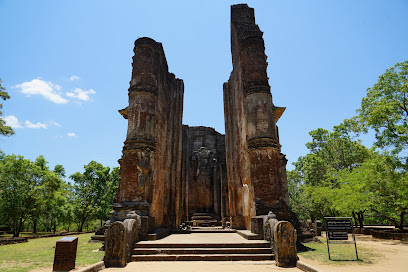
Dalada Maluva - ( Polonnaruwa)
Explore Dalada Maluva in Polonnaruwa, a historical landmark showcasing ancient architecture and spiritual heritage amidst stunning ruins.
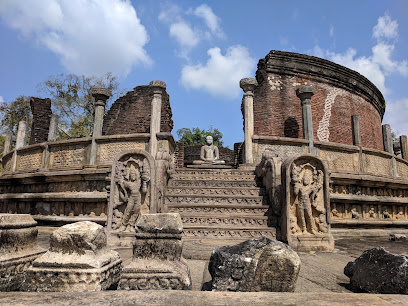
Royal Palace of King Maha Parakramabahu
Discover the Royal Palace of King Maha Parakramabahu, a historical landmark in Polonnaruwa that reveals the splendor of ancient Sri Lankan royalty.
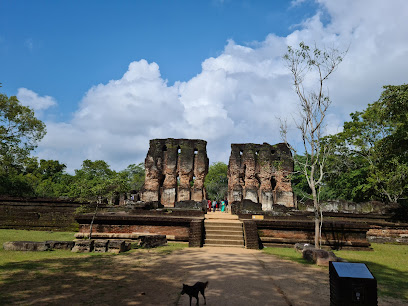
Vatadage
Explore Vatadage in Polonnaruwa, a magnificent Buddhist temple showcasing unique architecture and rich cultural heritage.
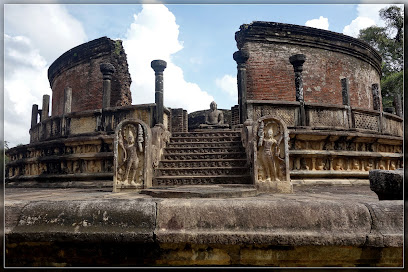
Statue of King Parakramabahu
Explore the majestic Statue of King Parakramabahu in Polonnaruwa, a historical landmark celebrating Sri Lanka's rich cultural heritage and architectural brilliance.
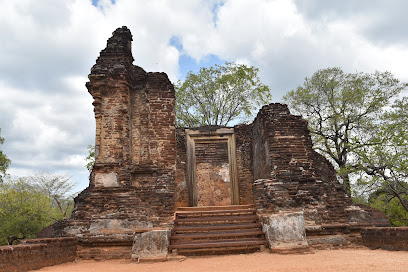
Polonnaruwa Ancient City
Explore the historical marvels of Polonnaruwa Ancient City in Sri Lanka, a UNESCO World Heritage Site filled with ancient temples and stunning sculptures.
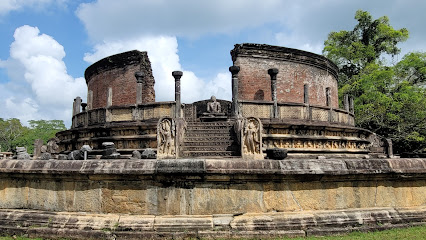
Lankatilaka Temple
Experience the splendor of Lankatilaka Temple in Polonnaruwa, a historical landmark showcasing Sri Lanka's rich architectural and spiritual legacy.
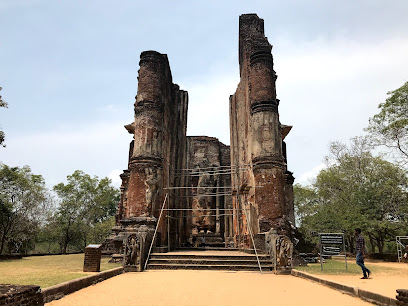
Thivanka Image House
Explore the Thivanka Image House, a captivating ruin in Polonnaruwa, showcasing ancient Sri Lankan artistry and history through stunning frescoes and sculptures.
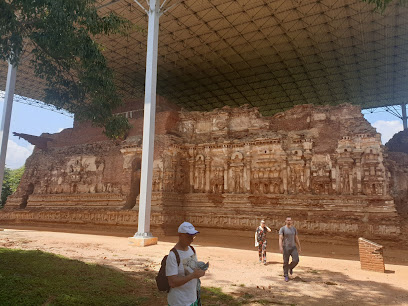
Parakrama Samudraya View Point
Discover the breathtaking beauty and rich history of Parakrama Samudraya View Point in Polonnaruwa, a must-visit landmark in Sri Lanka.
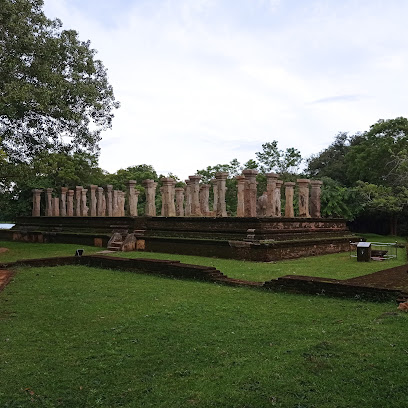
Potgul Temple
Explore Potgul Temple, a captivating historical landmark in Polonnaruwa, rich in ancient architecture and serene ambiance, reflecting Sri Lanka's golden age.

Deepa Uyana
Discover the tranquil beauty and historical significance of Deepa Uyana, a must-visit park in Polonnaruwa, Sri Lanka, perfect for nature lovers and history buffs.
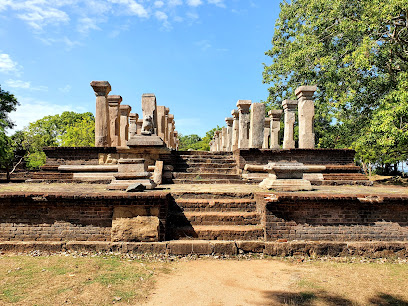
Archaeological Museum Complex
Discover the rich heritage of Sri Lanka's ancient civilization at the Archaeological Museum Complex in Polonnaruwa.

Hatadage
Discover Hatadage, Polonnaruwa's historical landmark, rich in cultural heritage and architectural brilliance, a must-see for every traveler.
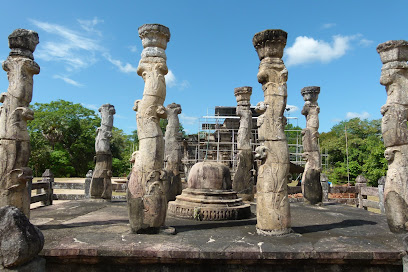
Council Chamber
Discover the historical significance and architectural beauty of the Council Chamber, a must-see landmark in Polonnaruwa, Sri Lanka.
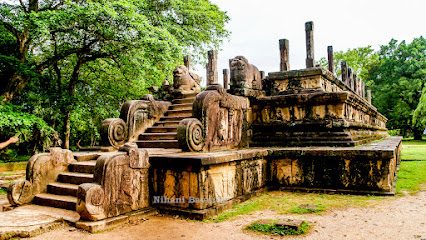
Nissanka Lata Mandapa
Explore the stunning Nissanka Lata Mandapa, a historical landmark in Polonnaruwa, showcasing exquisite architecture and rich cultural heritage.
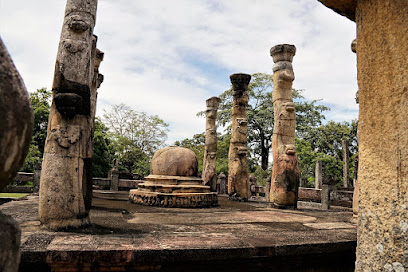
Unmissable attractions to see
Dambulla Royal Cave Temple and Golden Temple
Immerse yourself in the spiritual and artistic wonders of Dambulla Royal Cave Temple, a UNESCO World Heritage site in Sri Lanka.

Uththararamaya (Gal Vihara)
Discover the serene beauty and rich history of Uththararamaya (Gal Vihara), a must-visit Buddhist temple in Nissankamallapura, Sri Lanka.
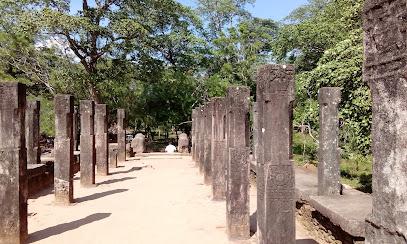
Dalada Maluva - ( Polonnaruwa)
Explore Dalada Maluva, a UNESCO World Heritage site in Polonnaruwa, where history and spirituality converge in breathtaking beauty.
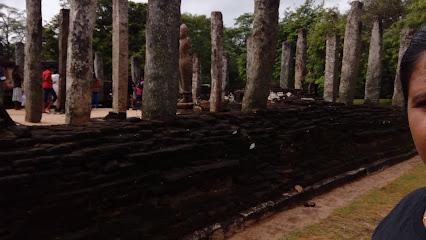
Sera Ella Water Fall
Experience the breathtaking beauty of Sera Ella Water Fall in Illukkumbura, a serene escape into nature's paradise.
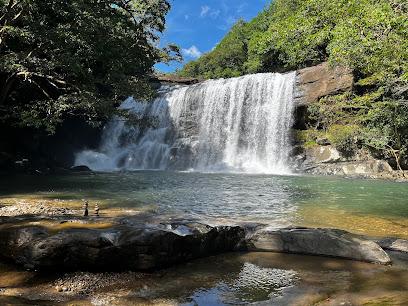
Wasgamuwa National Park
Explore Wasgamuwa National Park, Sri Lanka's hidden gem for wildlife encounters and breathtaking natural landscapes.
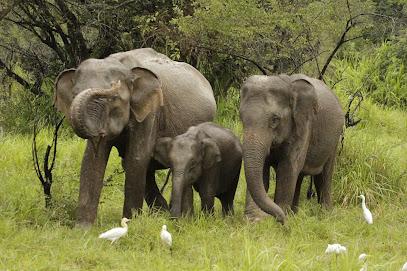
Rangiri Dambulla International Cricket Stadium
Immerse yourself in the vibrant cricket culture at Rangiri Dambulla International Cricket Stadium in Dambulla, Sri Lanka, where sports and stunning views collide.
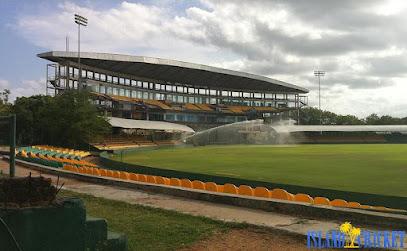
Vatadage
Explore Vatadage, a stunning historical landmark in Polonnaruwa, showcasing ancient Buddhist architecture and rich cultural heritage.
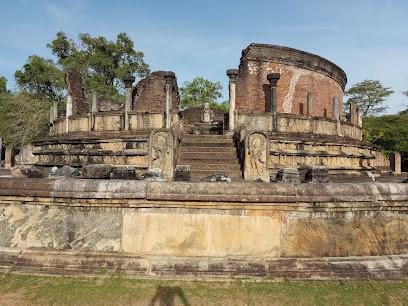
Archaeological Museum - Sigiriya
Explore the fascinating history of Sigiriya at the Archaeological Museum, home to ancient relics and artifacts that tell the story of a bygone era.
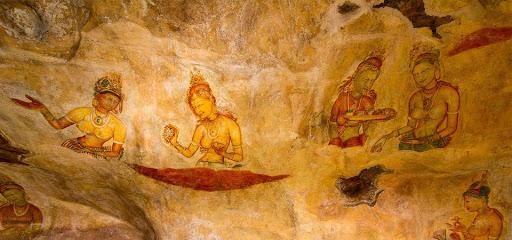
Thivanka Image House
Discover the spiritual and artistic heritage of Sri Lanka at Thivanka Image House, a UNESCO World Heritage Site in Polonnaruwa.
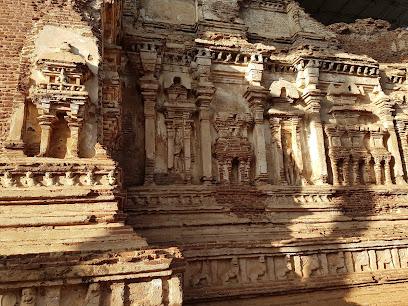
Hurulu Eco Park - Wild Elephant Safari
Explore the breathtaking Hurulu Eco Park, a wildlife haven in Habarana, and experience thrilling elephant safaris amidst stunning natural beauty.
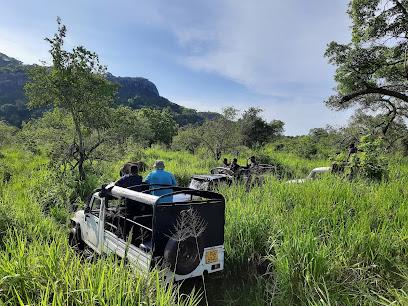
Pidurangala Rock Temple Ticket Office (LKR.1000.00 per tourists person)
Discover the stunning views and rich heritage at Pidurangala Rock Temple, a hidden gem near Sigiriya in Sri Lanka, perfect for adventure and culture lovers.
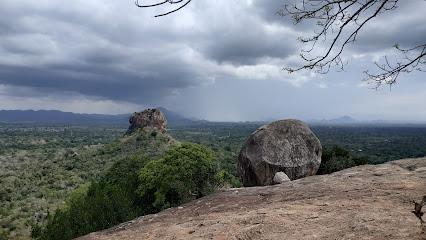
Parakrama Samudra
Discover the serene landscapes and rich history of Parakrama Samudra, a stunning reservoir in Sri Lanka perfect for relaxation and exploration.
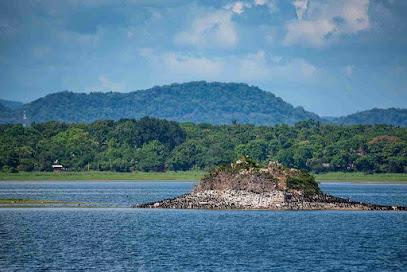
Archaeological Museum Complex
Explore the rich cultural heritage of Sri Lanka at the Archaeological Museum Complex in Polonnaruwa, a treasure trove of ancient artifacts.
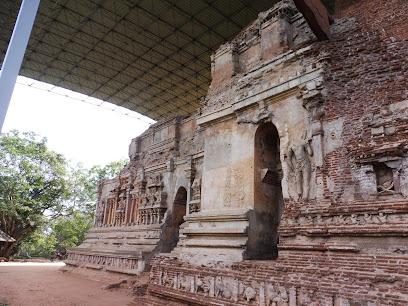
Deepa Uyana
Explore the lush landscapes and historical wonders of Deepa Uyana, a serene park in Polonnaruwa, perfect for nature lovers and history buffs alike.
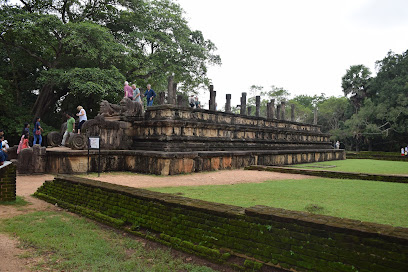
Hatadage
Explore Hatadage in Polonnaruwa, a historical landmark showcasing ancient architecture and the rich heritage of Sri Lanka.

Essential places to dine
Chillies Lathpandura Restaurant
Experience authentic Sri Lankan cuisine at Chillies Lathpandura Restaurant in Polonnaruwa - where every dish tells a story.
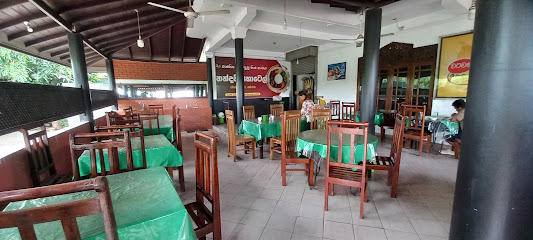
Priyamali gedara
Discover the flavors of Sri Lanka at Priyamali Gedara - where authentic cuisine meets cultural charm in Polonnaruwa.
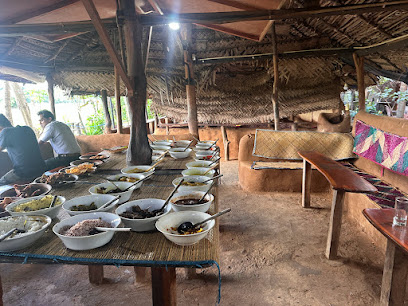
Pizza Hut - Polonnaruwa
Experience delicious pizzas and local flavors at Pizza Hut in Polonnaruwa – a perfect dining spot for tourists seeking comfort food.
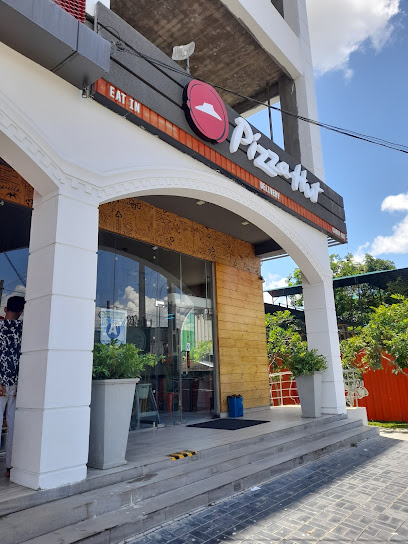
Zomoto family restaurant
Experience exquisite Sri Lankan cuisine at Zomoto Family Restaurant in Polonnaruwa—where tradition meets fine dining excellence.
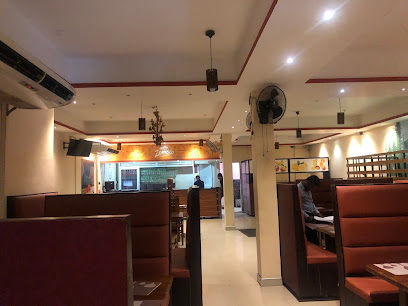
Saruketha Restaurant
Discover the authentic taste of Sri Lankan cuisine at Saruketha Restaurant in Polonnaruwa - where every dish is a celebration of flavor.
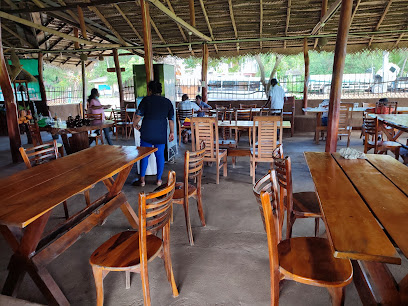
Ariya Rest House
Experience authentic Sri Lankan hospitality at Ariya Rest House in Polonnaruwa – your gateway to culture and comfort.
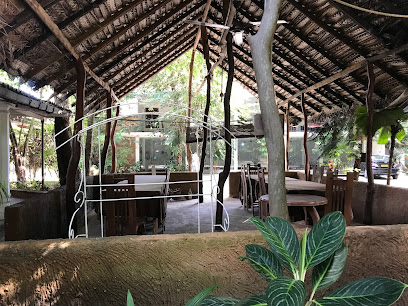
Rajadhani Restaurant Polonnaruwa
Experience authentic Sri Lankan cuisine at Rajadhani Restaurant in Polonnaruwa - a must-visit for every food lover.

Hela Bojun Hala-Polonnaruwa
Experience authentic Sri Lankan country food at Hela Bojun Hala-Polonnaruwa, where tradition meets taste in every dish.
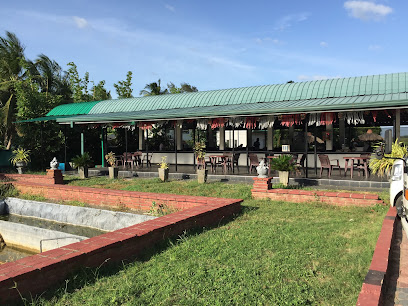
Sunrise & Akila Restaurant
Experience authentic Sri Lankan cuisine at Sunrise & Akila Restaurant in Polonnaruwa – where every meal tells a story.
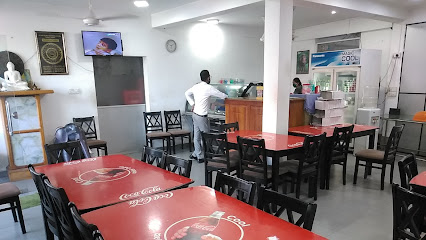
Gemi Gedara
Experience authentic Sri Lankan flavors at Gemi Gedara, where culinary traditions meet warm hospitality in Polonnaruwa.
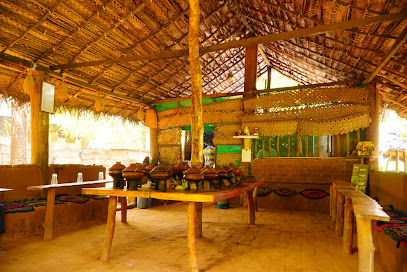
NS Tomatoes Restaurant
Experience the vibrant flavors of Sri Lanka at NS Tomatoes Restaurant—your family-friendly destination in Polonnaruwa!
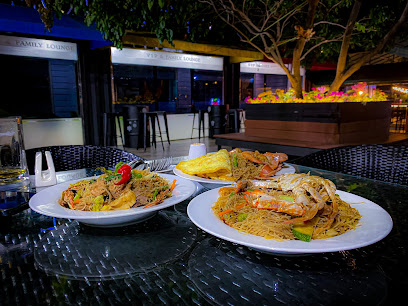
Dine Time Family Restaurant
Experience delightful family dining at Dine Time Family Restaurant in Polonnaruwa, where local flavors meet international cuisine.
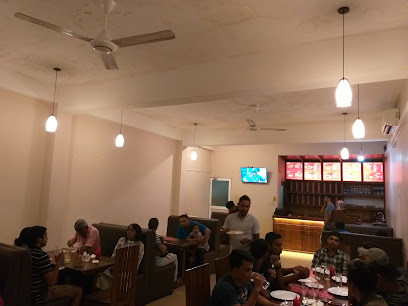
Wishma Restaurant
Experience authentic Sri Lankan flavors at Wishma Restaurant in Polonnaruwa – a culinary gem for every traveler.
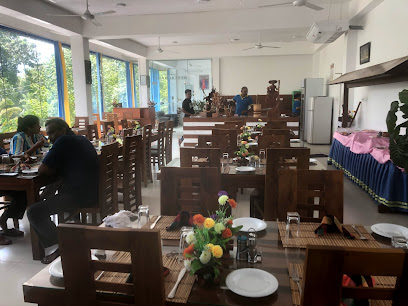
Dine Home Restaurant
Experience the flavors of Sri Lanka at Dine Home Restaurant in Polonnaruwa - a family-friendly dining destination filled with delicious local dishes.
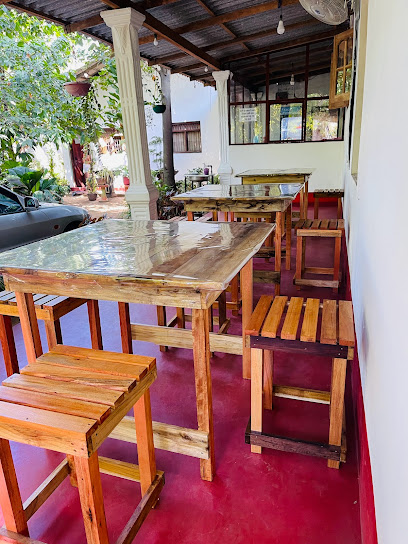
Kadamandiya Family Restaurant
Experience family-friendly dining at Kadamandiya Family Restaurant in Polonnaruwa - where local flavors meet warm hospitality.
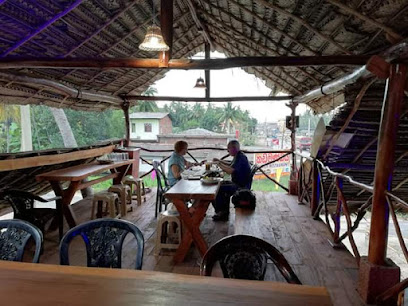
Markets, malls and hidden boutiques
Cargills Food City - Polonnaruwa
Discover the vibrant flavors of Sri Lanka at Cargills Food City - your go-to supermarket in Polonnaruwa for local and international delights.
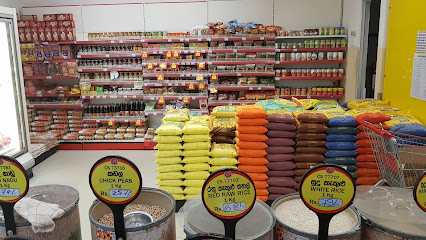
CIB Shopping Centre - Kaduruwela
Explore the CIB Shopping Centre in Kaduruwela for a delightful blend of fashion, electronics, and local shopping in a lively atmosphere.
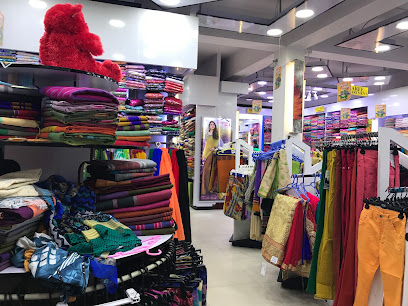
Nadiyas
Discover a vibrant clothing store in Polonnaruwa, offering stylish apparel and unique accessories for every fashion enthusiast.
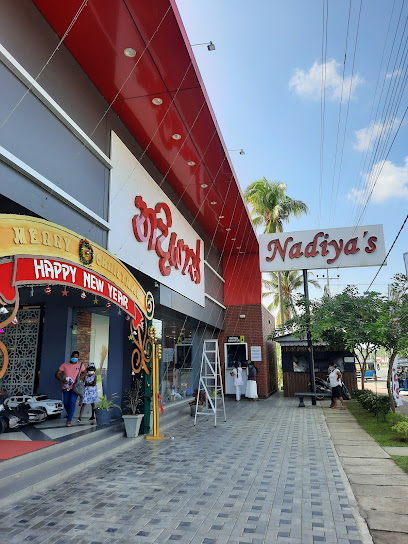
Polonnaruwa City Centre
Explore Polonnaruwa City Centre: A vibrant shopping mall offering a blend of local crafts, international brands, and delightful dining experiences.
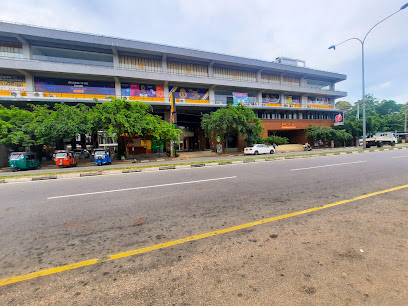
Vision Care - Polonnaruwa
Explore Vision Care - Polonnaruwa for exceptional eye care and stylish eyewear, ensuring your vision is as clear as the stunning landscapes of Sri Lanka.
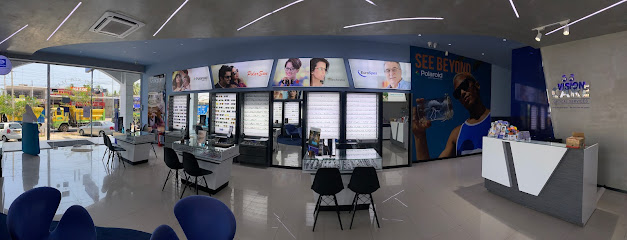
Pabalu Vehera
Explore Pabalu Vehera, a historical landmark in Polonnaruwa, Sri Lanka, showcasing ancient architecture and Buddhist heritage.
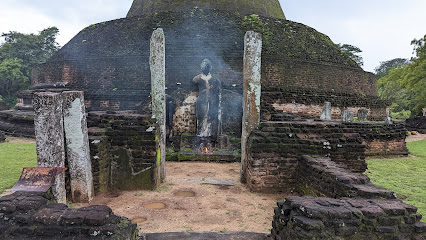
DOWNLOAD-Computer Store
Discover the latest in technology at DOWNLOAD-Computer Store in Polonnaruwa – where innovation meets accessibility for all your computing needs.
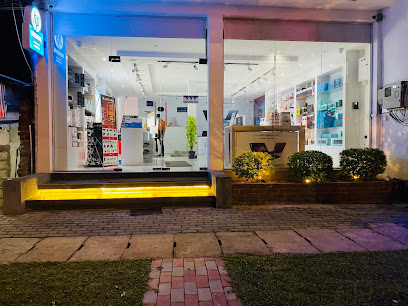
Sarath Hemachandra Jewellers
Explore the exquisite craftsmanship of Sarath Hemachandra Jewellers in Polonnaruwa, where timeless elegance meets authentic Sri Lankan artistry.
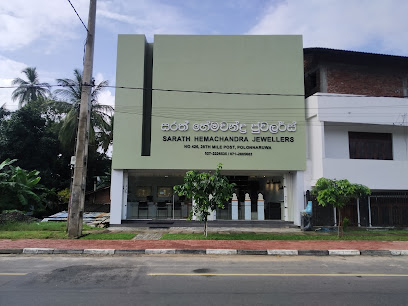
Brandix Athleisure Polonnaruwa
Discover the art of Sri Lankan athleisure at Brandix Athleisure Polonnaruwa, where quality fabrics meet innovative designs in a sustainable shopping experience.

Chocolate.lk
Discover the finest artisanal chocolates at Chocolate.lk, a delightful gift shop showcasing Sri Lankan craftsmanship and unique flavors.

Bunny.srilanka
Explore unique fashion and local craftsmanship at Bunny.srilanka, a premier clothing store for stylish souvenirs and everyday wear.

Softlogic
Discover Softlogic in Polonnaruwa, the ultimate destination for quality electronics and home appliances, blending local shopping with modern convenience.
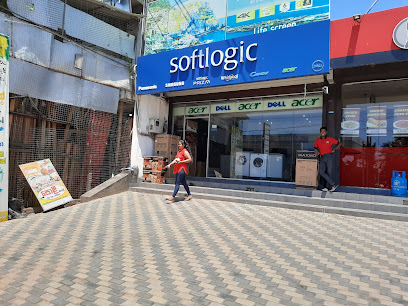
Amarican Style
Discover the essence of Sri Lankan fashion at Amarican Style, where vibrant styles meet local culture in Polonnaruwa.
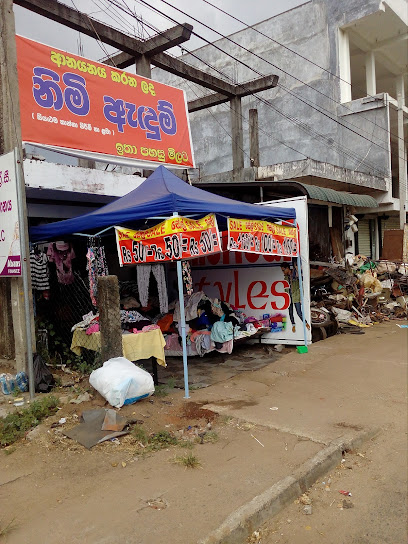
Nethmina Cellular Polonnaruwa
Discover Nethmina Cellular Polonnaruwa – your essential stop for mobile devices and accessories in the heart of Sri Lanka's ancient city.

Galusiri Fancy House_Kaduruwela
Explore the charm of Sri Lankan craftsmanship at Galusiri Fancy House, your go-to destination for unique home goods and souvenirs in Kaduruwela.
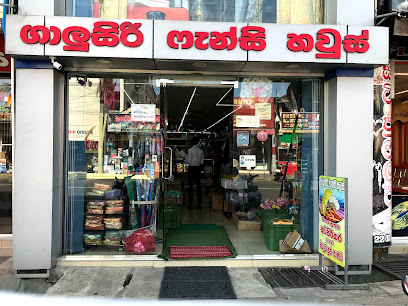
Essential bars & hidden hideouts
Hotel Sudu Araliya
Experience the perfect blend of comfort and culture at Hotel Sudu Araliya in Polonnaruwa, Sri Lanka.
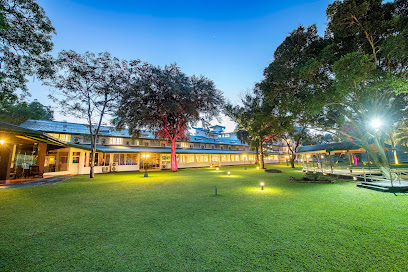
Zomoto family restaurant
Experience exquisite fine dining at Zomoto Family Restaurant in Polonnaruwa, where authentic Sri Lankan flavors meet an elegant atmosphere.
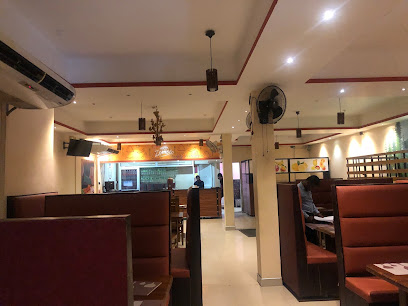
Ariya Rest House
Discover traditional Sri Lankan flavors and comfortable stays at Ariya Rest House, an essential stop for every traveler in Polonnaruwa.

Rajadhani Restaurant Polonnaruwa
Experience authentic Sri Lankan cuisine at Rajadhani Restaurant in Polonnaruwa, where tradition meets taste in a vibrant setting.
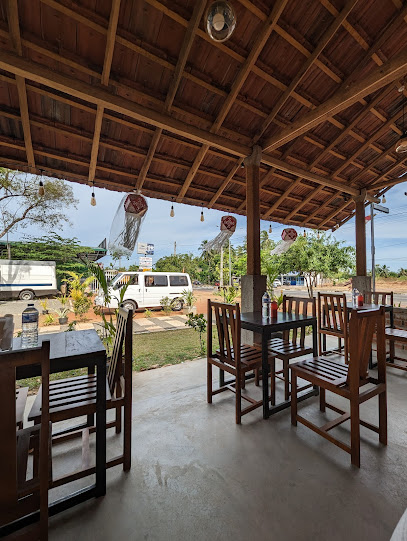
Thidas Arana Restaurant
Experience the flavors of Sri Lanka at Thidas Arana Restaurant, where local ingredients meet international cuisine in a vibrant setting.

Sunrise & Akila Restaurant
Experience authentic Sri Lankan flavors at Sunrise & Akila Restaurant in Polonnaruwa, where culinary tradition meets warm hospitality.
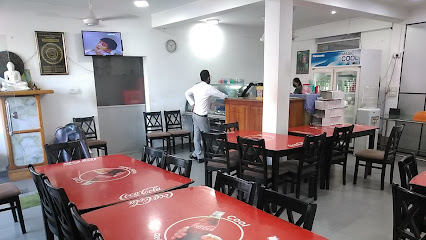
Gemi Gedara
Discover authentic Sri Lankan cuisine at Gemi Gedara, a cozy restaurant in Polonnaruwa surrounded by lush greenery and rich cultural heritage.

NS Tomatoes Restaurant
Discover the culinary delights of NS Tomatoes Restaurant, a family-friendly dining destination in the heart of Polonnaruwa, Sri Lanka.
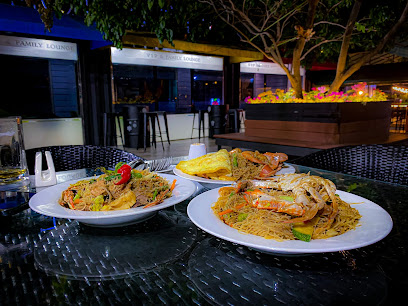
Pabalu Mandapa - Authentic Sinhala Cuisine
Discover the authentic flavors of Sinhala cuisine at Pabalu Mandapa in Polonnaruwa, where every dish tells a story of Sri Lankan heritage.
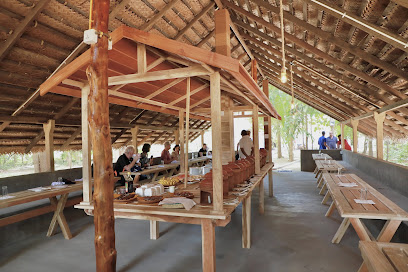
Umari Restaurant
Experience authentic Sri Lankan flavors at Umari Restaurant in Polonnaruwa, where every dish tells a story of local culinary traditions.
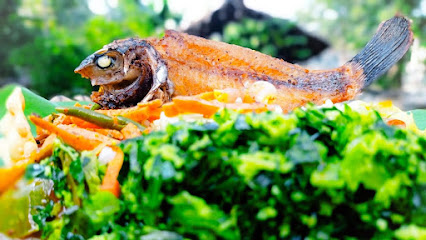
Saumyasiri Hotel
Discover the flavors of Sri Lanka at Saumyasiri Hotel, a cozy restaurant and cafe in Polonnaruwa, perfect for every palate.
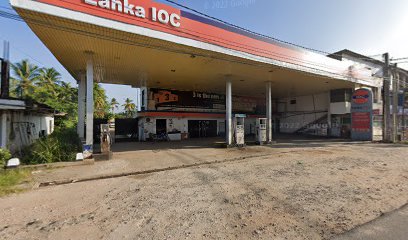
Basnayake's Restaurant
Experience the authentic flavors of Sri Lanka at Basnayake's Restaurant in Polonnaruwa, where local cuisine meets warm hospitality.
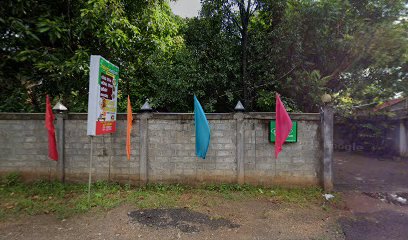
Cloud 7 Rooftop Restaurant
Experience stunning views and delicious cuisine at Cloud 7 Rooftop Restaurant in Polonnaruwa, a must-visit for food lovers and tourists.
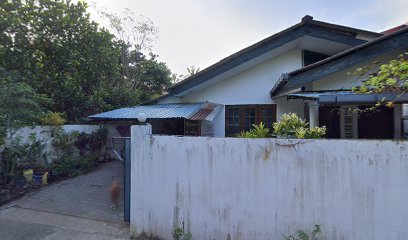
Night Fun restaurant
Experience the vibrant flavors of Sri Lanka at Night Fun Restaurant in Polonnaruwa, where culinary delights and a cozy atmosphere await you.
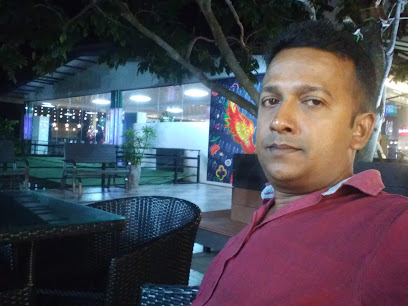
Goviya's Place
Experience the vibrant nightlife of Polonnaruwa at Goviya's Place, where local flavors and a lively atmosphere come together.

Local Phrases
-
- Helloහෙලෝ
[helo] - Goodbyeවියදනම්
[viyadanam] - Yesඔව්
[ow] - Noනෑ
[nē] - Please/You're welcomeකරන්න/අත්දැක්කා
[karanna/athēkka] - Thank youඔබට ස්තූතියි
[obata sthuthiyi] - Excuse me/Sorryකියනවා/කිසිවක්
[kiyanavā/kisiwak] - How are you?ඔය කොහොමද?
[ōya kohomada?] - Fine. And you?හොදටම. ඔය?
[hotama. ōya?] - Do you speak English?ඔයා ඉංග්රීසි කතා කරයිද?
[ōyā iṅgrīsi kathā karayida?] - I don't understandමට දත්ත නොවනවා
[mata dattha novanavā]
- Helloහෙලෝ
-
- I'd like to see the menu, pleaseකරුණාකර මෙනුසද බලන්න
[karunakara menudas balanna] - I don't eat meatමම මස් කනවා නෑ
[mama mas kanavā nē] - Cheers!සුභ විසන්
[subha visan] - I would like to pay, pleaseකරුණාකර ගෙවන්නේ
[karunakara gewanne]
- I'd like to see the menu, pleaseකරුණාකර මෙනුසද බලන්න
-
- Help!උක්කාලා!
[ukkalā!] - Go away!යන්න!
[yanna!] - Call the Police!පොලිස් කරනවා!
[polis karanavā!] - Call a doctor!වෛරස් කරනවා!
[vāras karanavā!] - I'm lostමම අතිරේජුවා
[mama atirējuvā] - I'm illමම අසා
[mama asā]
- Help!උක්කාලා!
-
- I'd like to buy...මම ... මේදට මෙනුස්වීමට ඇති
[mama ... mēdat menuswīmatē ēti] - I'm just lookingමම නම් බලන්නේ
[mama nam balanē] - How much is it?එය කොහොමද ආ?
[ēya kohomada ā?] - That's too expensiveඑය ඉහලි විය
[ēya ihali viya] - Can you lower the price?මිනිසුන්ද කරනවා?
[minisund karanavā?]
- I'd like to buy...මම ... මේදට මෙනුස්වීමට ඇති
-
- What time is it?වේයන්ය කොහොමදේ?
[vēyanaya kohomadē?] - It's one o'clockඑකටම කොහොම
[ēkatama kohoma] - Half past (10)දෙවටම කිවම
[dēwatama kivama] - Morningපානදුර
[pānadura] - Afternoonපසළදුර
[pasaladura] - Eveningසතියුදුර
[sathiyadura] - Yesterdayඊයේ
[īyē] - Todayඅද
[ada] - Tomorrowහෙට
[heta] - 1එක
[ēka] - 2දෙක
[dēka] - 3තුන
[thuna] - 4හතලිව
[hataliwa] - 5පහ
[paha] - 6හය
[haya] - 7හත
[hatha] - 8අට
[ata] - 9නය
[naya] - 10දහසය
[dahasaya]
- What time is it?වේයන්ය කොහොමදේ?
-
- Where's a/the...?... කොහොමදේ?
[... kohomadē?] - What's the address?ලිපිනය කුමන්දේ?
[lipinaya kumandē?] - Can you show me (on the map)?මාපට පෙන්නහෙදේ?
[mapata pennahe?] - When's the next (bus)?ඊළඟ කොහොමදුදේ (බස්)?
[īlaga kohomadudē (bas)?] - A ticket (to ....)තිකෙට් එකක් (එදා)
[tiket ekak (eda)]
- Where's a/the...?... කොහොමදේ?
History of Polonnaruwa
-
Polonnaruwa rose to prominence in the 11th century, becoming the capital of Sri Lanka after the fall of Anuradhapura. It was King Vijayabahu I who liberated the city from Chola invaders and established it as the new capital. This marked the beginning of a golden age for Polonnaruwa, characterized by significant advancements in architecture, irrigation, and culture.
-
King Parakramabahu I, who ruled in the 12th century, is one of the most celebrated monarchs of Polonnaruwa. His reign is often referred to as the 'Golden Age' due to his ambitious infrastructure projects, including the construction of the Parakrama Samudra, an enormous irrigation reservoir. Under his rule, Polonnaruwa became a hub of political, economic, and cultural activity, attracting scholars and artisans from across Asia.
-
Polonnaruwa is renowned for its exquisite architecture, which showcases a blend of Buddhist and Hindu influences. Notable structures include the Gal Vihara, a rock temple featuring four magnificent Buddha statues carved out of a single granite rock, and the Rankoth Vehera, a massive stupa that stands as a testament to the city’s spiritual significance. The Royal Palace and the Council Chamber of King Parakramabahu are also key highlights, reflecting the grandeur of the ancient city.
-
Polonnaruwa was not only a political and economic center but also a spiritual hub. The city is dotted with numerous temples, stupas, and monasteries that reflect the deep-rooted Buddhist traditions of the time. The Shiva Devale No. 2, one of the oldest Hindu temples in Polonnaruwa, signifies the religious diversity and tolerance that characterized the city. The Lankatilaka Temple, with its towering Buddha statue, remains a focal point of religious activity.
-
The decline of Polonnaruwa began in the late 13th century following invasions by South Indian kingdoms and internal strife. The city gradually lost its prominence and was eventually abandoned in favor of other administrative centers. The once-thriving capital fell into ruin and was reclaimed by the jungle, remaining largely forgotten until its rediscovery by British explorers in the 19th century.
-
The ruins of Polonnaruwa were rediscovered in the 19th century during British colonial rule, sparking interest among historians and archaeologists. Restoration efforts began in the early 20th century, with significant contributions from the Department of Archaeology of Sri Lanka. Today, Polonnaruwa is a UNESCO World Heritage Site, attracting visitors from around the world who come to marvel at its historical and architectural splendor.
Polonnaruwa Essentials
-
Polonnaruwa is located in the North Central Province of Sri Lanka. The nearest international airport is Bandaranaike International Airport in Colombo, approximately 200 kilometers away. From Colombo, you can take a train or bus to Polonnaruwa. The train journey offers scenic views and takes about 5-6 hours. Buses are frequent and take around 6-7 hours. Alternatively, you can hire a taxi or rent a car for a more comfortable and faster journey, which will take roughly 4-5 hours.
-
Polonnaruwa is a relatively small town, and many attractions are within walking distance or a short tuk-tuk ride away. Tuk-tuks are the most common form of local transport and are readily available. Bicycles are also a popular way to explore the ancient city and can be rented from many guesthouses and shops. For longer journeys, local buses and taxis are available, although hiring a car can offer more flexibility.
-
The official currency in Sri Lanka is the Sri Lankan Rupee (LKR). Credit cards are accepted in some hotels, restaurants, and shops, but it is advisable to carry cash, especially in smaller establishments and rural areas. ATMs are available in Polonnaruwa, but ensure you have enough cash for smaller transactions and entrance fees to historical sites.
-
Polonnaruwa is generally a safe destination for tourists. However, like any travel destination, it is advisable to take standard precautions. Avoid walking alone at night in unfamiliar areas and keep an eye on your belongings in crowded places. There are no specific high-crime areas targeting tourists, but it is always best to stay vigilant and aware of your surroundings.
-
In case of emergency, dial 119 for police assistance and 110 for medical emergencies. The local police station and hospital are available in Polonnaruwa. It is recommended to have travel insurance that covers medical emergencies. For minor health issues, there are several pharmacies in the town where you can purchase over-the-counter medications.
-
Fashion: Do dress modestly, particularly when visiting religious sites. Avoid wearing revealing clothing. Religion: Do respect local customs and traditions. Always remove your shoes and cover your head when entering temples. Public Transport: Do be respectful and give up your seat to elderly passengers. Don't eat or drink on public transport. Greetings: Do greet people with a friendly 'Ayubowan' (a traditional Sri Lankan greeting) or a handshake. Eating & Drinking: Do try local delicacies and accept food offerings graciously. Don't refuse hospitality, as it is considered impolite.
-
To experience Polonnaruwa like a local, visit the local markets where you can buy fresh produce and traditional Sri Lankan goods. Engage with locals, as they are often friendly and willing to share stories about the town's history and culture. Don't miss visiting the ancient ruins early in the morning or late in the afternoon to avoid the heat and crowds. Renting a bicycle to explore the ancient city is highly recommended for a unique and immersive experience.
Trending Landmark in Polonnaruwa
-
Uththararamaya (Gal Vihara)
-
Dalada Maluva - ( Polonnaruwa)
-
Royal Palace of King Maha Parakramabahu
-
Vatadage
-
Statue of King Parakramabahu
-
Polonnaruwa Ancient City
-
Lankatilaka Temple
-
Thivanka Image House
-
Parakrama Samudraya View Point
-
Potgul Temple
-
Deepa Uyana
-
Archaeological Museum Complex
-
Hatadage
-
Council Chamber
-
Nissanka Lata Mandapa
Nearby Cities to Polonnaruwa
-
Things To Do in Sigiriya
-
Things To Do in Trincomalee
-
Things To Do in Anuradhapura
-
Things To Do in Kandy
-
Things To Do in Nuwara Eliya
-
Things To Do in Ella
-
Things To Do in Negombo
-
Things To Do in Colombo
-
Things To Do in Bentota
-
Things To Do in Jaffna
-
Things To Do in Hikkaduwa
-
Things To Do in Matara
-
Things To Do in Mirissa
-
Things To Do in Galle
-
Things To Do in Unawatuna













